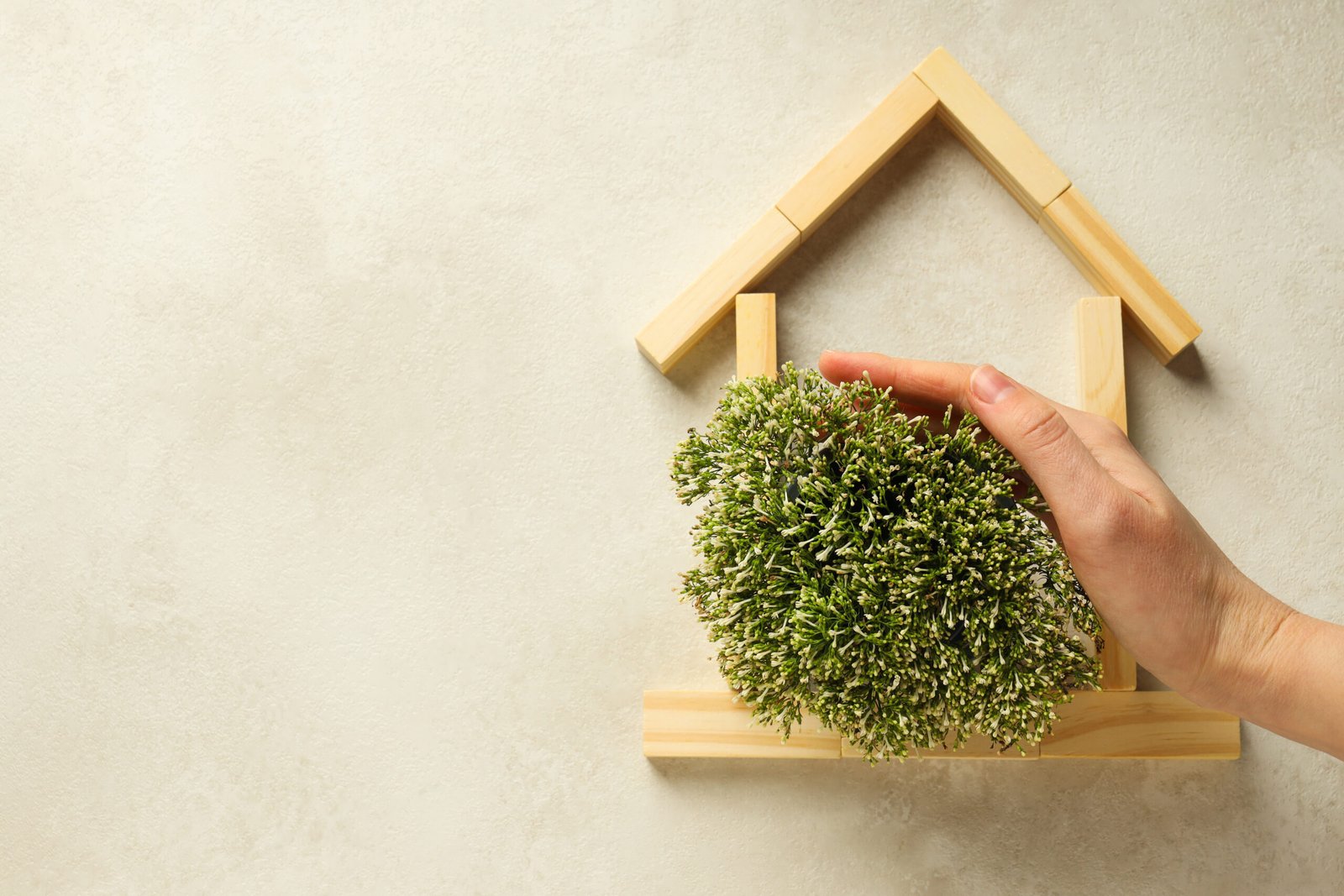As environmental concerns continue to grow, homeowners are prioritizing eco-friendly interior designs to reduce their carbon footprint, lower energy costs, and create healthier spaces. Sustainable decor choices—natural materials like recycled wood, marble stones, and energy-efficient appliances—offer many ways to design a greener home. Eco-friendly furniture, low-VOC paints that emit fewer emissions than traditional solvent-based options, and indoor plants all work together to improve air quality and create a serene, beautiful space. Embracing sustainable living doesn’t just benefit the planet; it also brings long-term savings and an enhanced quality of life. Here’s a collection of eco-friendly home interior design ideas to help you create a greener, more sustainable living environment.
1. Choose Sustainable Materials
Selecting sustainable materials for renovation and decor is key to eco-friendly home design. Reclaimed wood, bamboo, recycled metal, and cork flooring are some excellent options. These renewable materials often require less energy to produce, adding unique aesthetic appeal while promoting sustainability.
Top Sustainable Materials:
- Reclaimed Wood: Adds rustic charm and reduces deforestation.
- Bamboo: Rapidly renewable and versatile for flooring and furniture.
- Recycled Metal: Durable and environmentally friendly.
2. Enhance Natural Light to Reduce Electricity Use
By maximizing natural light, you can reduce the need for artificial lighting, especially during the day. Large windows, skylights, and strategically placed mirrors can help bring in more sunlight, cutting down reliance on electricity while creating a warm, welcoming atmosphere.
Ways to Optimize Natural Lighting:
- Light-colored walls that reflect sunlight.
- Skylights installed in darker areas of the home.
- Mirrors placed opposite windows to spread light.
3. Install Smart Home Technology
Adding smart home systems can enhance energy efficiency while providing convenience. Smart thermostats, for example, adjust to your habits, so you’re not wasting energy on heating or cooling when you’re not home. You can even control smart lighting systems remotely or set them to turn off automatically, ensuring lights are only on when needed.
Smart Home Ideas:
- Smart thermostats (like Nest or Ecobee)
- Energy-efficient LED lighting with motion sensors
- Water leak sensors to prevent water waste
4. Energy-Efficient Windows
Energy-efficient windows, like double or triple-pane windows with low-emissivity (Low-E) coatings, help maintain indoor temperatures by minimizing heat loss in winter and reducing heat gain in summer. This design promotes comfort and reduces the need for excessive heating or cooling.
Tips for Energy-Efficient Windows:
- Choose materials like vinyl and fiberglass.
- Position windows to maximize natural light while reducing direct heat exposure.
- Add curtains or blinds to block intense sunlight during summer.
5. Use Non-Toxic Paints and Finishes
Traditional paints often contain volatile organic compounds (VOCs), which release harmful chemicals. By choosing low or zero-VOC paints and finishes, you’re opting for healthier options for both residents and the environment. Eco-friendly paints also come in a variety of colors and finishes, helping you reduce indoor air pollution without sacrificing style.
Benefits of Non-Toxic Paint:
- Enhances indoor air quality
- Reduces health risks from chemical exposure
- Supports eco-friendly manufacturing processes
6. Green Roofing Solutions
Green roofs, also known as living roofs, are gaining popularity in urban settings for their insulating properties, reduced rainwater runoff, and air quality benefits. Green roofs, partially or completely covered with vegetation, absorb CO₂, help cool the home, and support local biodiversity.
Advantages of Green Roofing:
- Provides insulation, lowering heating and cooling needs.
- Supports local flora and fauna.
- Extends the life of traditional roofing by protecting it from the elements.
7. Maximize Water Efficiency
Water conservation is another essential step for creating an eco-friendly home. Installing low-flow showerheads, faucets, and toilets can reduce water usage by up to 50% without sacrificing comfort. Additionally, rainwater harvesting systems for gardening or landscaping offer an easy, cost-effective way to save water.
Water-Efficient Features:
- Low-flow faucets and showerheads
- Dual-flush toilets
- Rainwater collection systems
8. Focus on Indoor Air Quality with Plants
Indoor plants not only add beauty but also help purify the air by removing toxins and releasing oxygen. Certain plants, like snake plants, spider plants, and pothos, are particularly effective at cleaning the air. Further enhancing indoor air quality, non-toxic paints, natural fiber rugs, and organic materials work together to create a fresher home environment.
Popular Air-Purifying Plants:
- Snake Plant
- Peace Lily
- Spider Plant
- Aloe Vera
9. Incorporate Energy-Efficient Appliances
Appliances account for a significant portion of household energy use, making energy-efficient models essential for a sustainable home. Look for Energy Star-certified washing machines, dishwashers, and refrigerators. These appliances use less energy and water, cutting down utility costs.
Energy-Saving Tips:
- Replace outdated appliances with Energy Star-rated models.
- Use appliances during off-peak hours to save energy.
- Regularly maintain appliances to ensure maximum efficiency.
10. Harness Solar Power
Incorporating solar panels is a powerful way to make your home more eco-friendly. Solar energy is renewable, reduces dependence on fossil fuels, and can significantly lower electricity bills over time. While solar panels perform best in sunny climates, they’re still effective in moderate regions, and recent technological advancements make solar energy more accessible than ever.
Benefits of Solar Power:
- Reduces electricity costs
- Lowers carbon footprint
- Increases home value
Final Thoughts
Creating an eco-friendly home is a rewarding journey with significant benefits for both you and the planet. By implementing these sustainable design ideas, you’ll reduce environmental impact, lower utility costs, and enjoy a healthier living environment. Embrace these changes and start building a sustainable future, one step at a time.
Looking to start your eco-friendly home project? Call us at +971581297423 to explore sustainable home design options tailored to your needs!



